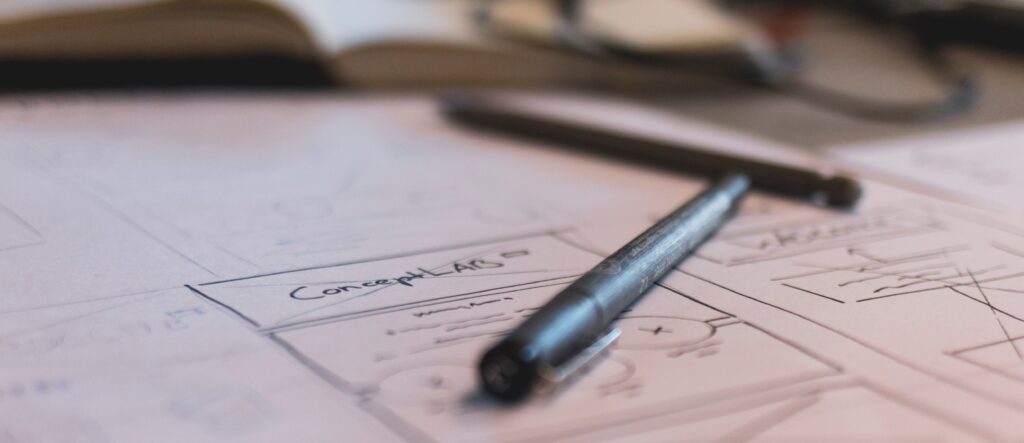Creating a board game from scratch might sound like a massive challenge. You might be wondering where to start, how to know if your idea is any good, or what tools you need to actually make it real. The truth is: making a board game is an exciting creative journey, and with the right guidance and tools, it’s something you can absolutely do.
In this guide, we’ll walk you through everything you need to know about how to make a board game, from your first idea to the final prototype. Whether you’re designing for friends, hoping to pitch to publishers, or aiming to self-publish, this article offers concrete, experience-based advice to get you moving in the right direction.
What Makes a Great Board Game?
Before diving into the design process, it’s worth understanding what makes a board game stand out. It’s a combination of factors: engaging mechanics, a compelling theme, replayability, and smooth player interaction. But more than anything, a great board game creates memorable experiences. Whether players are laughing, negotiating, or racing against the clock, those emotional beats are what people remember.
That’s why every step in your board game design should support the player experience you want to create. That’s your compass. Let’s explore how to build towards it.
How to Make a Board Game: What do you or your players like?
Experience is often the best way to create something new. The best board games often start with a strong theme. Themes provide the emotional and narrative framework that makes mechanics feel meaningful. When you have a theme you’re passionate about (whether it’s sci-fi, medieval politics, forest spirits, or time travel) it gives you a foundation to build everything else on.
Your theme should excite you because you’ll be spending a lot of time thinking about it. And just as importantly, your theme helps players connect with the game faster. A clear theme gives context to player actions and helps the rules make sense more intuitively.
But don’t worry if your theme evolves. Many successful games started with one concept and shifted direction after playtesting. The important thing is to start with something that inspires you. From there, define the core objective of your game. Are players trying to collect points, complete quests, eliminate opponents, or survive the longest? Having a clear objective will make it easier to structure the rest of your design.
Once you know what the players are trying to do, you can start figuring out how they’ll do it. This is where mechanics come in: things like card drafting, worker placement, area control, dice rolling, or deck building. Choose one or two mechanics that reinforce the theme and core experience you want to deliver.
Think About the Basics of Board Game Design
Before you write a single rule, define what the player will do. Not in abstract terms, but in verbs:
- Will they trade? Bluff? Build? Deduce?
Pick one core action and build your design around it. Games that try to do too many things at once usually feel unfocused. If you’re not sure what action to focus on, look at what mechanics you enjoy most when playing other games. - How do they win?
Write the win condition as a single sentence. For example: “First player to build five buildings wins” or “Player with the most coins after five rounds wins.” A clear win condition helps guide all your decisions. - What’s one decision they’ll make every turn?
If players don’t have a meaningful choice on every turn, the game can feel boring. Your job is to create moments where players weigh risk, strategy, and preference. Even in simple games.
Once you know this, define the theme that justifies these actions. If the players are deducing hidden roles, is it spies, werewolves, or aliens? The theme serves to make mechanics feel intuitive.
Use a simple framework to guide this stage:
| Objective | Core Actions | componentes |
|---|---|---|
| e.g. build the best zoo | collect animals, trade cards | cards, tokens, board |
Filling this table keeps your project grounded. You don’t need a full rulebook to start, but you do need a clear purpose for each piece of your game.

Outlining Components and Player Actions in Board Game Design
Next, think about what physical components your game will use. A traditional board game might include a game board, player tokens, custom dice, cards, and various resource markers. But modern board games come in many shapes and forms.
Imagine what each player will be doing on their turn. Are they drawing cards, moving tokens, upgrading abilities, or triggering events? Consider how these actions relate to your components. If your game is about exploration, maybe players place tiles as they move into new territory. If it’s about negotiation, maybe cards represent hidden information.
It’s also helpful to map out the game flow. What happens at the start of a round? What do players do on their turn? How does the round end? How do you win? Drafting this flow early will make it easier to spot gaps or pacing issues later.
Don’t Forget to Playtest!
Now it’s time to bring your ideas into the real world. Your first prototype should be extremely simple. Use paper, index cards, coins, or anything else you have on hand. The goal is to get the game playable, not beautiful. You can write rules directly on cards, sketch a quick board on paper, and use household objects as tokens. Don’t spend too much time polishing the look of your game yet: things will change, and fast iteration is more valuable than visual polish.
Once your prototype is ready, do a solo playtest. Pretend to be each player, and walk through the turns. You’ll immediately see what’s unclear, what’s missing, and what’s broken. Then, revise your prototype and invite a few friends to test it with you. Watch how they interact with the game. Don’t explain everything. See what they understand or struggle with naturally.
Once your core mechanics are solid, it’s time to balance your game. Balance means that no one strategy dominates, the difficulty is appropriate, and different choices feel viable. This can be one of the hardest parts of board game design and it requires a lot of testing.
You’ll probably need to make major changes after the first few playtests. That’s normal. Game design is a cycle: test, adjust, repeat. Take notes, ask questions, and focus on how players feel while playing. Are they engaged? Confused? Bored? Their reactions are your most valuable feedback.
Show off your game, don’t hide it!
Playtesting is key to make a board game
Your friends and family are a great starting point for playtesting, but eventually you’ll want a wider range of perspectives. Try testing with people who play a lot of games, people who don’t, and ideally with some members of your target audience.
The goal is to find out how your game performs in different hands. Do casual players find it intuitive? Do hobby gamers find it deep enough? Are the rules too complex, or not interesting enough? These are questions you can only answer by watching people play.
Use feedback to identify problems and refine your design but don’t try to please everyone. Focus on making your game the best version of what it’s meant to be, not a generic product that tries to appeal to everyone.
Go to Conventions and Pitch Your Game
If you want to publish your game or find collaborators, game conventions are your best bet. These events are filled with designers, publishers, retailers, and passionate players. They’re a fantastic place to network, test your prototype, or even pitch your game.
Bring a polished version of your prototype, print rule sheets, and be ready to explain your game in one or two sentences. Practice your pitch beforehand so you can speak confidently and clearly. You never know who might take an interest.
Even if you’re not ready to pitch, conventions are an incredible source of inspiration. You’ll see trends, meet mentors, and play games that challenge your assumptions.

Play More Games Before You Design Your Own
If you’re serious about learning how to make a board game, one of the most valuable things you can do is play other games. This is your research phase. The more you play, the more you’ll understand how different games handle pacing, choices, interaction, and fun.
Try to experience a wide range of board games, even ones outside your comfort zone. Abstract strategy games, party games, economic simulations, co-op adventures; they all have something to teach. While you’re playing, ask yourself questions: What keeps you engaged? What frustrates you? What do you wish the game did differently?
You’ll start noticing design patterns, mechanical solutions, and thematic integrations that resonate with you. Over time, this builds your board game design intuition. You’ll be better equipped to choose mechanics that support your goals and to avoid common pitfalls.
Why You Should Use a Board Game Design Software
Designing physical components manually can be time-consuming. That’s where board game design software comes in. Tools like Tabletop Creator make it easier to layout cards, boards, and tokens with precision without needing advanced graphic design skills.
Tabletop Creator lets you prototype your game visually, organize layers and assets, and export your files for printing or digital play. It also integrates seamlessly with digital platforms like Tabletop Simulator, so you can playtest your game online with people anywhere in the world.
Using professional tools not only saves time, it makes you feel like a real designer. You’ll be able to iterate faster, share your game with others more easily, and present a polished version to publishers or collaborators.
Using Tabletop Creator to Finalize Your Board Game Design
As your game matures, consider using Tabletop Creator to finalize your design. This board game design software allows you to lay out your entire game (cards, boards, tokens) with intuitive tools built specifically for game creation. You don’t need to mess with complex design programs or endless folders of assets.
With Tabletop Creator, you can export print-ready files, simulate your game digitally, and even share assets with collaborators. You can organize your components into panels and layers, making it easy to manage large projects.
Whether you’re prototyping or preparing for print, this tool saves you hours and helps you focus on design.
Board Game Design isn’t Easy But…
Learning how to make a board game isn’t just about mechanics or rules. It’s about creating experiences that bring people together. It’s about creativity, iteration, and sharing something personal with the world.
You don’t need to be an expert artist or a game theory genius to start. You just need a good idea, a willingness to test and improve, and the right tools to bring your vision to life.
So what are you waiting for? Dive in. Play more. Build something weird. Test it with friends. Improve it. And when you’re ready, try Tabletop Creator for free and take your first step toward making a board game that people remember.


